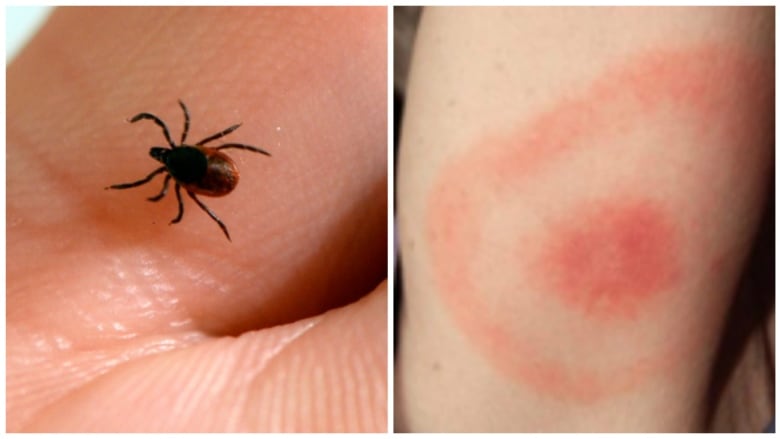'It's an epidemic': Nova Scotia mayor wants more research into Lyme disease
Carolyn Bolivar-Getson would like to see more work being done on vaccines

A Nova Scotia mayor is calling for more federal money for research into Lyme disease and efforts to increase public education and awareness of the bacterial infection.
Lunenburg is one of six counties in Nova Scotia where the risk of Lyme disease is considered higher than in other parts of the province, according to the provincial Health Department.
"It's an epidemic in our area, no question," Carolyn Bolivar-Getson, mayor of the Municipality of the District of Lunenburg, told CBC's Information Morning.
The other regions include Yarmouth, Shelburne, Queens, Halifax and Pictou counties. Other areas of Nova Scotia are considered low or moderate risk for Lyme disease.
The disease is caused by bacteria (Borrelia burgdorferi) that's transmitted through the bite of select types of infected ticks.
It can cause a rash at the site of the bite, fever, fatigue, muscle aches and headaches. If untreated, it can lead to a weakening of facial muscles and heart problems.
Lyme disease on the rise in Nova Scotia
The number of cases of Lyme disease has more than doubled in Nova Scotia between 2014 and 2015, rising to 254 reported cases from 115. The numbers for 2016 haven't been released yet.
Last week, the federal government announced $4 million in funding to establish a Lyme disease research network designed to improve diagnosis and treatment.

The government also released a framework for fighting the disease, focused on three areas:
- Establishing a national medical surveillance program to use data collected by the Public Health Agency of Canada to track the incidence and economic costs of Lyme disease.
- Creating and distributing standardized educational materials for public health care providers to increase national awareness to improve prevention, identification, treatment and management.
- Establishing guidelines for prevention, identification, treatment and management with a plan for sharing best practices throughout Canada.
Making dollars available for a cure
Bolivar-Getson said the funding announcement is a step in the right direction, but is concerned that not enough funding is going toward primary research.
"What we really need is to have dollars to be able to get out here and find a cure or a vaccine for Lyme disease," she said.
Some of the research funded by the federal government through the Canadian Institutes of Health Research is looking specifically at the molecular biology, virulence factors and pathogenicity of the bacteria that causes Lyme disease.
In recent years, researchers have been trying to determine how Lyme disease bacteria travels in the bloodstream and spreads to other parts of the body.
Bolivar-Getson said she worries about the impact the tick problem will have on Lunenburg's attractiveness as a place to live.
"Families will not choose to live in an area that is affected with ticks to the extent that we have and we need to get a handle on this," she said.
With files from CBC's Information Morning and Kathleen Harris












_(720p).jpg)


 OFFICIAL HD MUSIC VIDEO.jpg)
.jpg)



























































































